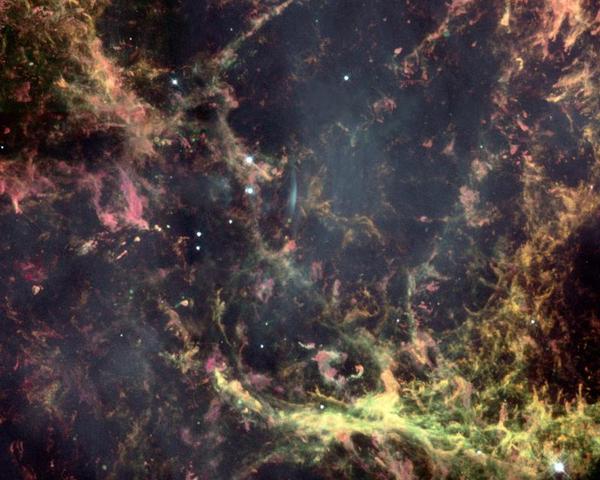
The Crab Nebula is the remnant of a supernova observed in 1054 by Chinese and Arab astronomers. It is located in the constellation Taurus and is about 6,500 light-years from Earth. M1 is famous for its complex filamentary structure and for hosting a central pulsar.
The nebula features a network of ionized gas filaments, mainly hydrogen and helium, enriched with heavier elements such as oxygen and neon. These filaments are propelled at speeds of 1,000 to 1,500 km/s. The observed radiation mainly comes from synchrotron emission, created by relativistic electrons interacting with the nebula's magnetic field.
At the center of M1 is a pulsar, a compact remnant of the original star. Jocelyn Bell Burnell (1943-) helped confirm the pulsed emissions. This pulsar spins at 30 revolutions per second and is the main energy source powering the nebula.
The Crab Nebula has been observed across all wavelengths: radio, infrared, optical, ultraviolet, and X-rays. These observations allow mapping the distribution of relativistic particles and the magnetic field.
| Nebula | Age (years) | Supernova Type | Main Feature |
|---|---|---|---|
| Crab Nebula M1 | ~970 | Type II | Central pulsar, extensive synchrotron emission |
| Cassiopeia A Nebula | ~340 | Type IIb | Intense radio and X-ray emissions, iron and silicon filaments |
| Tycho Nebula | ~450 | Type Ia | Symmetrical expansions, low radio emission compared to M1 |
Source: NASA, ESA, CXC, SSC and ESO – Optical Observations of M1.